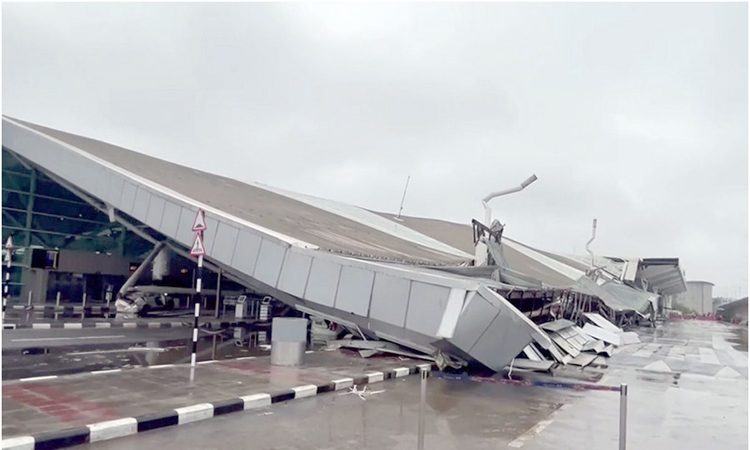Roof Collapse at Delhi Airport Kills One and Injures Several Following Heavy Rains
A section of the roof at New Delhi’s airport gave way after heavy rainfall on Friday, resulting in the death of one man and injuring eight others. This incident adds to a series of high-profile infrastructure failures affecting India’s reputation.
A statement from Indira Gandhi International Airport indicated that the collapse occurred at approximately 5 am at the old Departure forecourt of Terminal 1 due to persistent rain since early morning.
Following the collapse, all departures from Terminal 1 have been temporarily halted, the statement further mentioned.
Delhi Fire Services assistant divisional officer Ravinder Singh reported that rescuers arrived to find that two support pillars had fallen onto a car.
There were eight injuries, and tragically, one man lost his life, Singh explained that the deceased man was trapped inside the car when the pillar fell on it.
“It took us a little longer to retrieve his body. Our rescue operations concluded in 20 minutes,” he added, noting that the injured were transported to the hospital.
Photos released by the fire service depicted the large white canopy of the roof on the ground, crushing several cars. One image showed a person slumped under twisted metal in the driver’s seat of one of the vehicles.
India’s Minister of Civil Aviation, Ram Mohan Naidu Kinjarapu, stated that he is “personally monitoring” the situation in a post on X.
The capital territory of Delhi has experienced significant rainfall this week, causing flooding on roads and submerging cars. This rainfall provided some relief from weeks of extreme heat, with temperatures soaring up to 49.9 degrees Celsius (121.8 degrees Fahrenheit) – the highest on record – putting a strain on the country’s electricity grid and power supply.
Friday’s incident is the latest in a series of structural failures and accidents in the country of 1.4 billion people, which has recently focused on ambitious infrastructure projects and modernizing its aging transportation network.
Image credit: Nagaland


